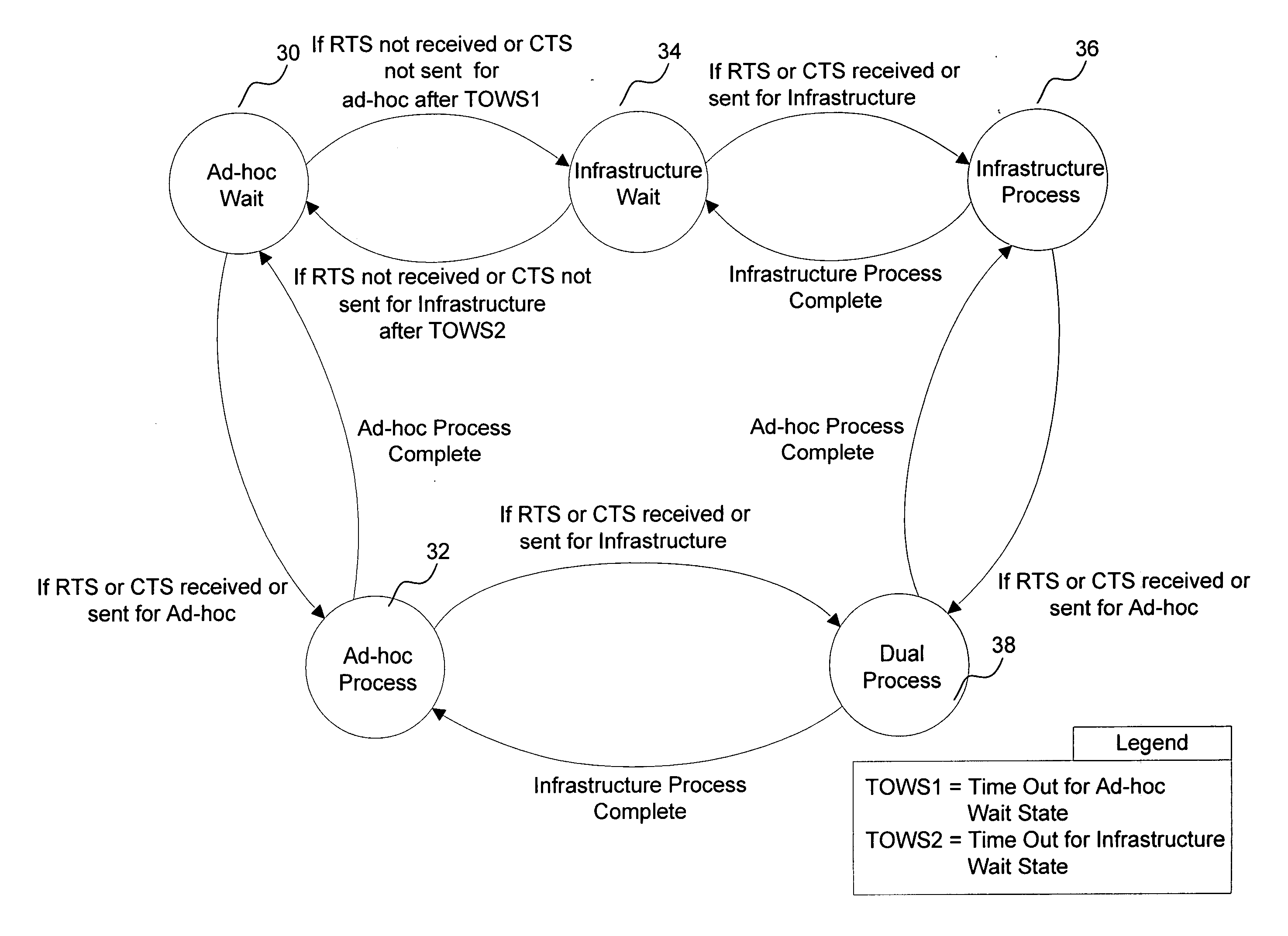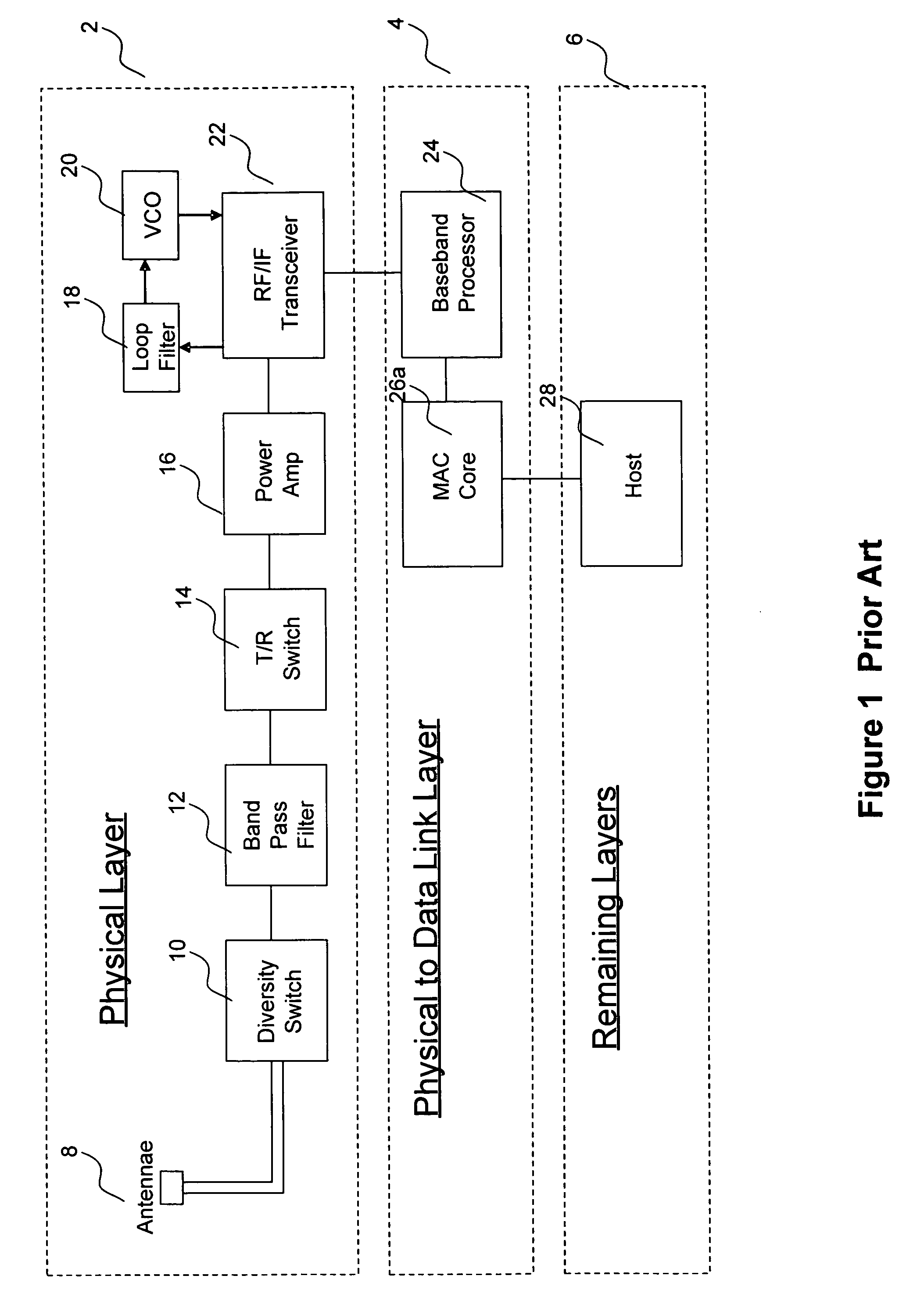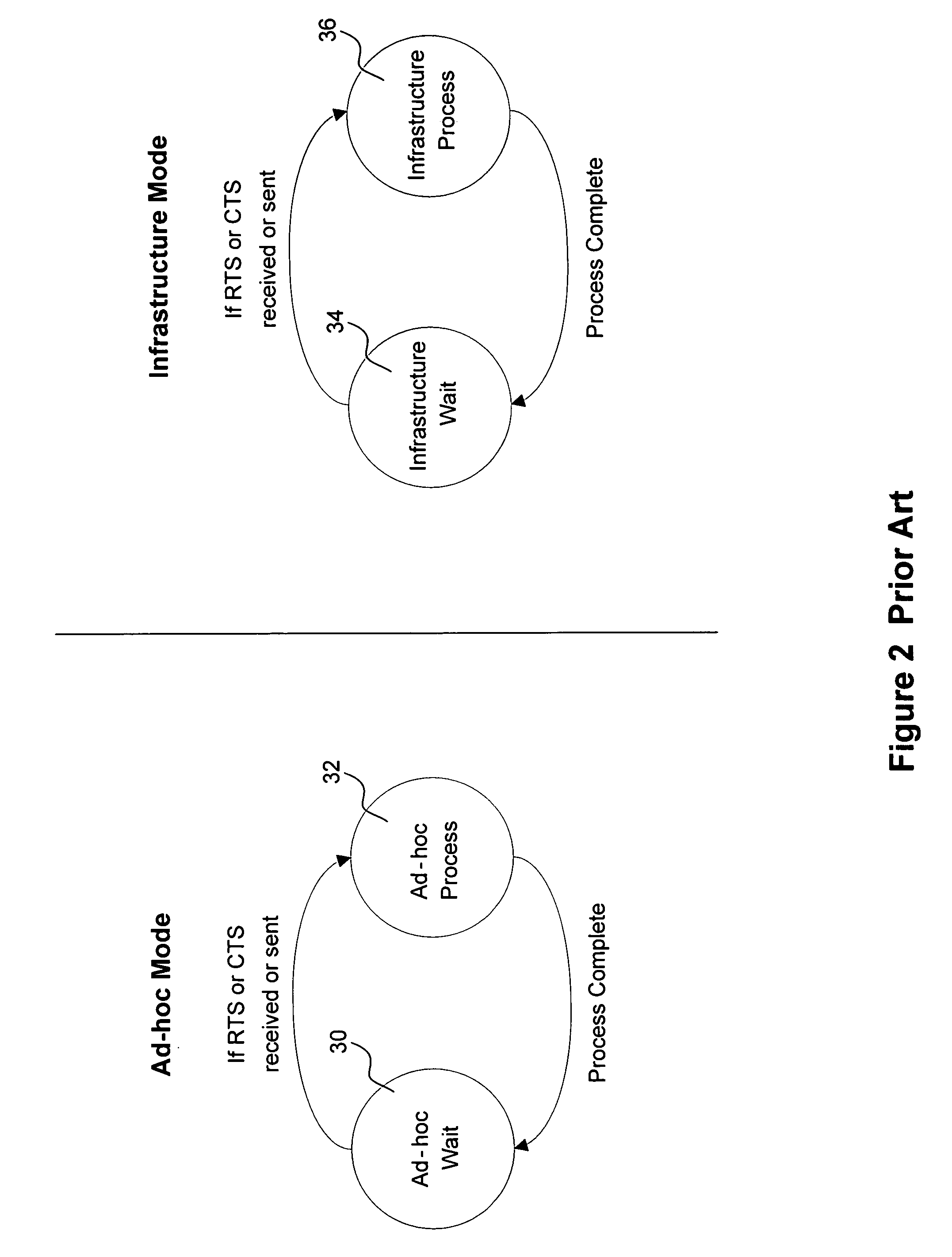Wireless state machine and multiplexing method for concurrent ad-hoc and infrastructure mode service in wireless networking
a wireless network and infrastructure mode technology, applied in the field of wireless state machines and multiplexing methods for concurrent ad-hoc and infrastructure mode services in wireless networking, can solve the problems of interference and crosstalk between two wireless network cards in close proximity to each other, the cost of wireless technology has dropped tremendously, and the problem of affecting the service life of the network card is not completely wireless, so as to achieve the effect of increasing the load of processes
- Summary
- Abstract
- Description
- Claims
- Application Information
AI Technical Summary
Benefits of technology
Problems solved by technology
Method used
Image
Examples
Embodiment Construction
State Machine
[0035]FIG. 3 illustrates the state machine embodying the present invention. The state machine may contain ad-hoc wait state 30, ad-hoc process state 32, infrastructure wait state 34, infrastructure process state 36, and dual process state 38. Ad-hoc process state 32 executes ad-hoc processes while infrastructure process state 36 executes infrastructure processes. Dual process state 38 concurrently executes both ad-hoc and infrastructure processes.
[0036] If the state machine is at ad-hoc process state 32 and an infrastructure RTS or CTS is received or sent, ad-hoc process state 32 transitions to dual process state 38 for concurrent execution of both processes. After dual process 38 executes the infrastructure process, the state machine transitions back to ad-hoc process state 32. If the state machine is at infrastructure process state 36 and an ad-hoc RTS or CTS is received or sent, infrastructure process state 36 transitions to dual process state 38 for concurrent ex...
PUM
 Login to View More
Login to View More Abstract
Description
Claims
Application Information
 Login to View More
Login to View More - R&D
- Intellectual Property
- Life Sciences
- Materials
- Tech Scout
- Unparalleled Data Quality
- Higher Quality Content
- 60% Fewer Hallucinations
Browse by: Latest US Patents, China's latest patents, Technical Efficacy Thesaurus, Application Domain, Technology Topic, Popular Technical Reports.
© 2025 PatSnap. All rights reserved.Legal|Privacy policy|Modern Slavery Act Transparency Statement|Sitemap|About US| Contact US: help@patsnap.com



